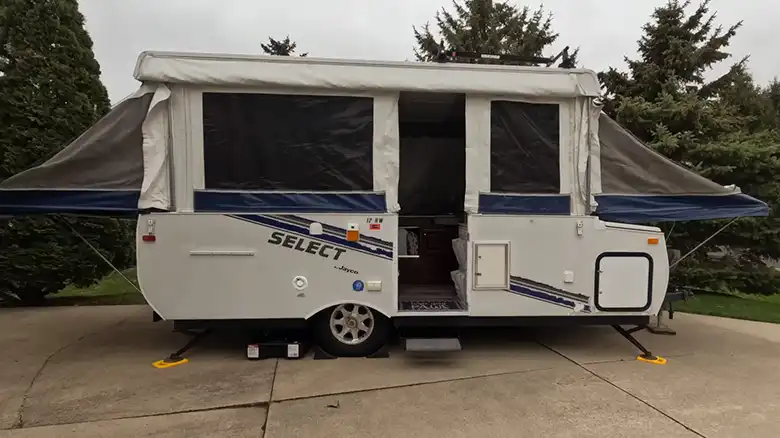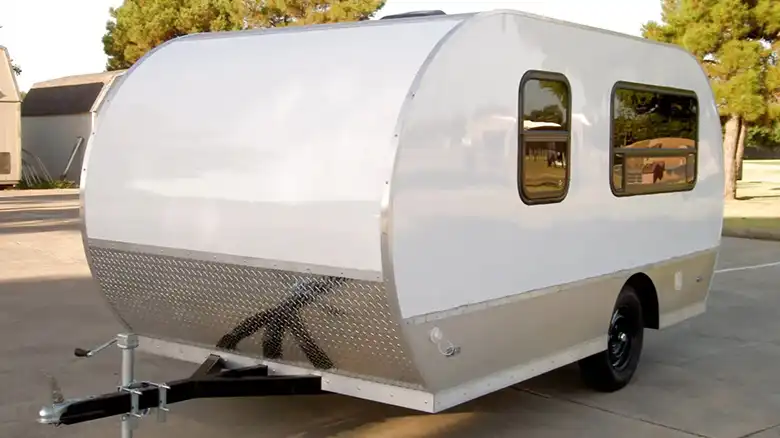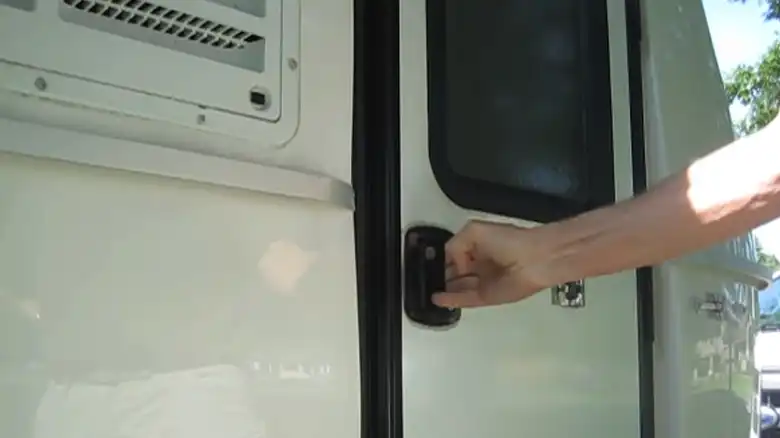Buying a pop up camper soon? First learn what owners wish they knew sooner! Five key facts lie ahead about heat, setup, space, maintenance, and towing. This introduction tackles what pop up veterans would tell new buyers. Wisdom from experience keeps road trips fun!
Pop ups seem cute…at first! But their canvas walls and folding lifts work differently than expected. It takes some getting used to. In this article, I’ll explore those quirks through real users’ eyes. Learn how to spot warning signs before purchase.
Informed choices set you up to pick the perfect pop up with confidence! Head into ownership eyes wide open. Then unwind in your cozy home-away-from-home, ready for adventure! The open road awaits.

Pop-Up Campers are Sensitive to Temperature Changes
Pop up campers, with their thin canvas walls, tend to let exterior temperatures influence the interior temperature very rapidly. This can make them alternately too hot or too cold depending on the weather. Carefully researching cooling and heating options that suit your likely camping climate is important.
Thin Walls, Temperature Fluctuations: The lightweight nature of pop-up campers, often characterized by thin canvas walls, can lead to rapid temperature fluctuations with external conditions. During hot weather, the interior can heat up quickly, while colder temperatures may make it challenging to stay warm. It’s crucial to consider the climate you’ll be camping in and choose cooling and heating options accordingly.
When facing warmer climates, carefully assess air conditioning units or alternative cooling methods. On the flip side, for colder months, look for built-in or portable heating options to ensure a comfortable camping experience.
Setup and Takedown Can Be Time-Consuming
The manual cranking systems used to raise and lower many pop up campers means the setup and takedown process tends to be quite physical and time-consuming. Allow 30-60 minutes for each process. Getting the order of operations exactly right is also crucial – one wrong move can prevent the camper from fully closing. Practicing ahead of your first trip is highly recommended to get the motions down pat.
– Manual crank systems mean setup/takedown is physical and time-consuming (allow ~30-60 mins)
– Getting the order right is vital; one wrong move can complicate the camper’s closure.
– To avoid complications during your trip, it’s advisable to practice the setup and takedown process ahead of your first excursion.
Realistic Expectations for Space and Amenities
The compact nature of pop ups means storage space inside is far more limited compared to a traditional RV. Bathrooms, showers, and kitchens can also be very tight or missing altogether. It’s important to focus your decision making on the amenities that matter most rather than trying to cram too many features into a tiny footprint.
Limited Storage Space: Compared to traditional RVs, pop-up campers have significantly limited storage space. This means you need to carefully plan and prioritize the essentials for your trip. Consider your storage needs and pack accordingly, avoiding unnecessary items to prevent clutter.
Compact Amenities: Bathrooms, showers, and kitchens in pop-up campers can be compact or, in some cases, absent. Understand the limitations and focus on the amenities that matter most to you. This might involve planning for more outdoor cooking or embracing campground facilities.
Pop-Up Campers Require Regular Maintenance
Keeping a pop up camper in good shape requires diligent and regular maintenance work. This includes inspecting and cleaning the roof, seals, windows etc. to prevent leaks or damage. You also need to routinely check tire wear, wheel bearings, canvas condition, and the lift system pulleys/cranks. Carefully following recommended procedures for taking down and storing when wet is also crucial to prevent mold or mildew buildup.
Regular Inspection: Regularly inspect and clean the camper’s roof, seals, and windows to prevent leaks and damage. Check tire wear and wheel bearings before each trip to ensure a safe journey. Additionally, keep an eye on the canvas for tears and the lift system for any broken cranks or pulleys.
Weather Considerations: Follow recommended procedures when taking down and storing the camper, especially when it’s wet. Storing a damp camper can lead to mold and other issues, impacting the camper’s overall condition.
Practice Towing Before Long Road Trips
The small tires and lightweight nature of pop up campers means there are more revolutions and increased chances of blowouts or abnormal wear compared to a typical trailer. Properly balancing the load so your vehicle has a sufficient tow capacity buffer is important. Taking short local test driving trips allows you to get a feel for the handling before attempting any long hauls.
Small Trailer Tires: The smaller tires on pop-up campers mean more revolutions, increasing the risk of blowouts and wear. Properly balancing the load in the camper and leaving a buffer in the tow rating are essential for safe towing.
Practice Locally: Before embarking on extended trips, take short local journeys to get a feel for handling the camper. This practice helps you become familiar with towing dynamics and ensures a smoother experience on longer hauls.
Other Considerations When Buying a Pop-Up Camper
Before making a pop-up camper purchase, there are additional factors to consider.
Mold/Mildew Prevention: Preventing mold is crucial for maintaining the integrity of the camper. The canvas is particularly vulnerable, so ensure it’s properly dried and stored. Never pack away damp canvas, even if you’re in a rush to depart.
Evaluate Camping Locations: Some parks may have restrictions on pop-up campers or specific size constraints. Before planning your trips, ensure your chosen camping locations permit pop-up campers. Consider renting first to test suitability.
Consider Renting First: If you’re unsure about committing to a pop-up camper, consider renting one for a “test drive”. This allows you to experience the camper in a real camping scenario and helps you make an informed decision.
Frequently Asked Questions
Q1: What are some good heating options for pop up campers?
– Portable propane or electric heaters are good options. Some pop ups also have built-in furnaces. Assessing your climate needs is crucial.
Q2: How can I make setup/takedown easier?
– Practice the process multiple times before your trip so you learn the proper motions. Print out instructions as a reference. Have campground staff demonstrate if needed.
Q3: What maintenance checks should I do routinely?
– Inspect the canvas, seals, tires, lift system pulleys, and all openings thoroughly before and after each trip. Address any issues immediately.
Q4: Should I buy or rent first?
– Renting can serve as a “test drive” to see if pop up camping fits your travel style before buying. It also builds experience.
Q5: How many people can sleep comfortably in a pop up?
– Pop ups average 4-8 sleepers depending on size. Assess your space needs realistically. More people means tighter quarters.
Final Words
Owning a pop-up camper is a unique experience that requires careful consideration and preparation. While pop-up campers offer the freedom of tent camping with added comfort, they come with their own set of challenges. Understanding the subtleness of temperature control, setup and takedown processes, space limitations, ongoing maintenance, and towing dynamics is vital for a satisfying ownership experience.


